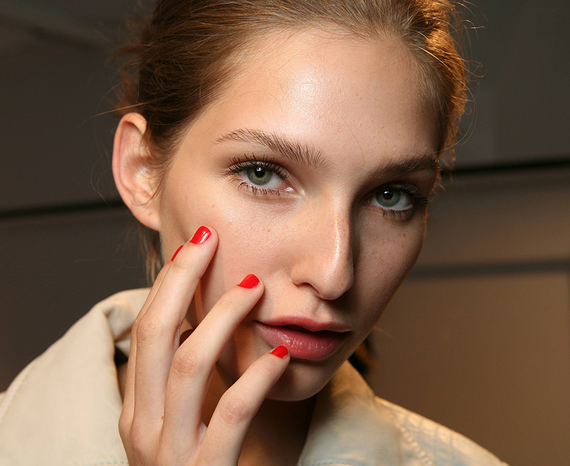By Lauren Hubbard, Allure
On the scale of gross yet viscerally satisfying beauty treatments, peeling a pore strip off your nose and looking at the desolate forest of gunk no longer clogging your pores is right up there with Baby Foot sole-shedding and Korean exfoliating mittens that slough dead skin off like teensy Play-Doh snakes. There's little that compares to the feeling of triumph from actually seeing the dirt and dead skin that won't be forming into a big honking zit right before your friend's wedding. But here's the thing: It turns out those so-called blackheads you've been dead set on eradicating may not be blackheads at all.
Yep, sad but true (or maybe happy but true?)--those little spikes sticking out of your Bioré strip may actually just be sebaceous filaments.
So the next logical question to arise is: What the hell are sebaceous filaments? According to Joshua Zeichner, the director of cosmetic and clinical research at Mount Sinai Hospital in New York City, they are "the normal accumulation of sebum around the hair, giving the follicle a prominent, sometimes dark, appearance." And they might not be worth getting rid of.
Dermatologist Jason Emer agrees, adding that the filaments can form into hairlike strands that help move skin's natural oil (a.k.a. your body's homemade moisturizer) to the surface. It's when that oil stops flowing that you run into issues.
"Blackheads and whiteheads are caused by a buildup of sebum behind a blockage in your pore," explains Zeichner. Whiteheads form where the oil gets trapped below the surface, while blackheads develop where the blocked oil and skin cells oxidize, turning black. So while those little light-gray bumps at the end of your nose may fill your inner seventh-grader with anxiety, it doesn't mean your face is about to reenact your worst adolescent breakout. In fact, per Emer, "sebaceous filaments are nothing to worry about at all, except for cosmetic purposes."
OK, but what do you do if you want to tone down your miniature polka dots for cosmetic purposes? Emer likes exfoliating cleansers, "particularly ones that are papaya-, pumpkin-, or charcoal-based, as well as masks a few times a week." For a more intensive approach, he recommends microneedling or low-density lasers, like Clear + Brilliant, which boost cell turnover and make skin appear smoother and the filaments less noticeable. Both doctors like salicylic acid to keep sebum buildup at bay. And in our favorite bit of news, both suggest pore strips, but stress that they're best for temporarily eliminating signs that you're not actually a poreless denizen of Airbrushland.
More from Allure:
Find the Best Haircut for Your Face Shape
7 Weird Tricks for Looking Great in Photos
The 10 Best Drugstore Mascaras Under $20
The 6 Prettiest Haircuts for Long Hair
Celebrity Hairstyles That Will Make You Look 10 Years Younger
51 New Hair Ideas to Try in 2016
